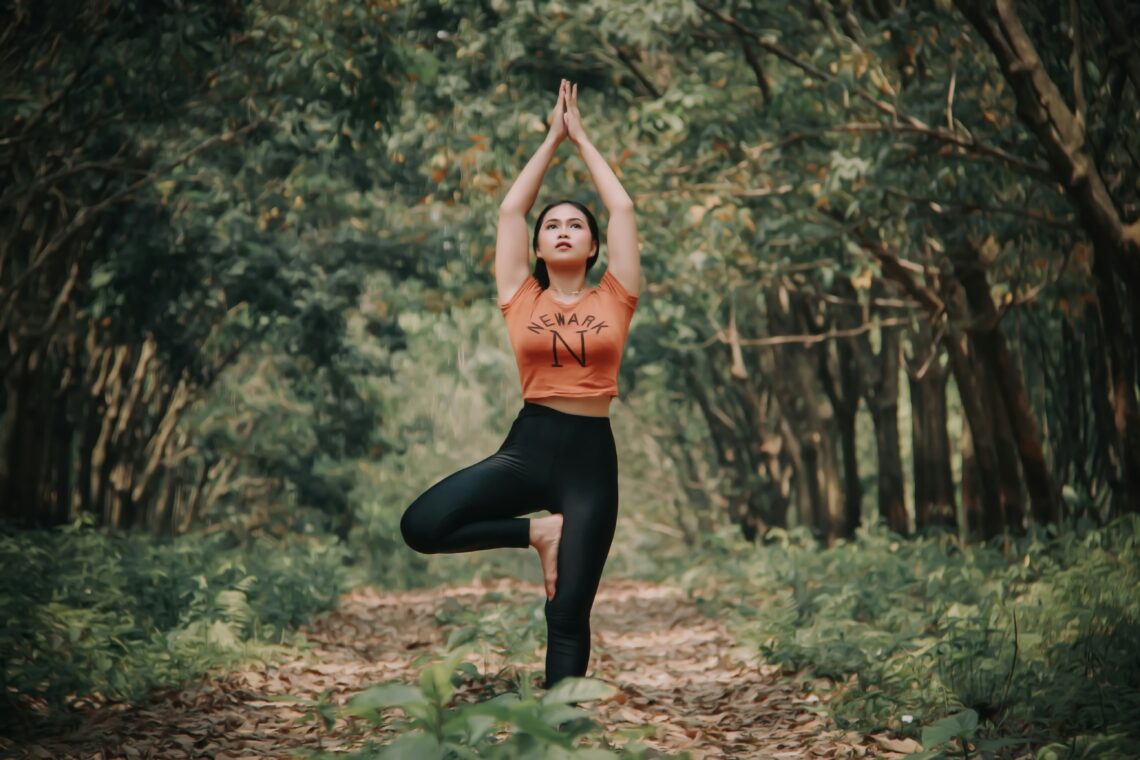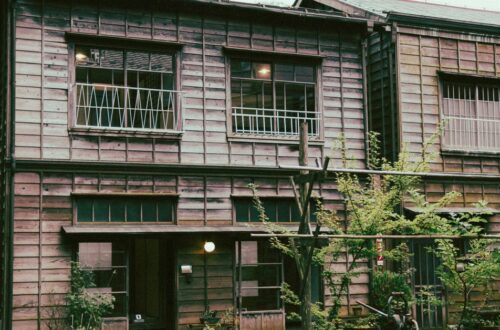Embracing Holistic Healing: Exploring Alternative Therapies for Modern Challenges
So, picture this: it’s a rainy Tuesday afternoon, and I’m sitting at my favorite coffee shop, sipping on what I like to call a “warm hug in a mug” (that’s just a fancy way of saying a latte, but let’s roll with it). Outside, the world is bustling—cars splashing through puddles, people huddled under umbrellas, and the occasional dog, oblivious to the weather, prancing along. It’s the kind of day that makes you want to curl up with a good book or binge-watch your favorite show. But instead, my mind begins to wander to something that’s been on my heart lately: holistic healing.
Now, I know what you might be thinking. “Holistic healing? Isn’t that just a trendy buzzword? What’s wrong with a good old-fashioned trip to the doctor?” And to that, I say, fair point! But hear me out. In today’s whirlwind of modern living, where stress levels are as high as my caffeine intake (and that’s saying something), many of us are looking for alternative ways to feel better—body, mind, and spirit. So, let’s take a stroll together down this path of holistic healing and explore some alternative therapies that could just make our lives a little brighter.
What Exactly is Holistic Healing?
Alright, let’s start with the basics. Holistic healing is an approach that considers the whole person—mind, body, and spirit—in the quest for optimal health. Instead of just treating symptoms (like you might with a quick visit to the doctor for that annoying cold), holistic healing seeks to understand the root causes of issues and promote overall well-being. It’s like taking a step back and realizing that everything is interconnected. Who knew that my back pain could be linked to my stress from work? (Spoiler: it totally can!)
The Appeal of Alternative Therapies
There’s something undeniably appealing about the idea of alternative therapies. Maybe it’s the promise of a more personalized approach, or perhaps it’s the idea of tapping into natural remedies that have been used for centuries. Whatever it is, it’s hard to ignore the growing trend of people seeking out these alternatives. I mean, have you heard of Reiki? It’s like magic but with a gentle touch and a sprinkle of good vibes.
Exploring Alternative Therapies
1. Acupuncture: A Pointed Approach
Let’s kick things off with acupuncture, shall we? This ancient Chinese practice involves inserting thin needles into specific points on the body to promote healing. I remember the first time I tried it; I was a mix of excited and terrified. “What if I turn into a human pin cushion?” I thought. But honestly, it was a surprisingly relaxing experience. Many people swear by acupuncture for everything from chronic pain to stress relief. And while the science is still catching up in some ways, there’s no denying that it’s helped countless folks find relief.
2. Herbal Medicine: Nature’s Pharmacy
Next up, let’s chat about herbal medicine. Think of it as nature’s very own pharmacy, with plants and herbs used to treat ailments. Whether it’s sipping on chamomile tea to calm the nerves or popping some echinacea when a cold threatens to strike, herbs have been used for ages. I’ve dabbled in herbal remedies myself and found that they can be a lovely complement to traditional medicine. Just remember, folks, not all herbs are created equal! (You can’t just pick a random plant and hope for the best… trust me on this one.)
3. Yoga and Mindfulness: Stretching Beyond the Mat
Ah, yoga. I can practically hear the soothing music and smell the incense wafting through the studio. Yoga is more than just fancy poses (though I still can’t quite master the crow pose—what’s up with that?). It’s about connecting the body and mind, finding inner peace, and, let’s be real, it’s a great excuse to wear stretchy pants all day. Many studies suggest that yoga can help reduce stress, improve flexibility, and even boost your mood. Plus, let’s not forget the power of mindfulness—being present in the moment can work wonders for our mental health. (And it’s way cheaper than therapy… just saying!)
4. Aromatherapy: Scents That Soothe
Now, onto something that appeals to the nose: aromatherapy! I mean, who doesn’t love walking into a room that smells like a spa? Essential oils can be used in various ways—diffused, applied topically, or even incorporated into a bath. Lavender for relaxation, peppermint for energy, and eucalyptus for those stuffy days. Just beware of overdoing it; I once tried to create a “spa-like atmosphere” at home and ended up smelling like a walking herb garden. (Note to self: moderation is key!)
5. Massage Therapy: Because Who Doesn’t Love a Good Rubdown?
Let’s be honest: who wouldn’t love to indulge in a massage? It’s like a mini-vacation for your muscles! Massage therapy can relieve tension, reduce stress, and improve circulation. Plus, there’s just something therapeutic about letting someone else work out those knots you’ve accumulated from hunching over your laptop. (I swear my shoulders are trying to touch my ears sometimes!) Whether it’s Swedish, deep tissue, or even hot stone massage, there’s a style for everyone. Just make sure to communicate with your therapist; nobody wants an accidental elbow to the spine!
The Modern Challenges We Face
Alright, let’s pause for a moment to reflect. Why do we even need these alternative therapies? Well, in our fast-paced world, stress and anxiety seem to be as common as coffee runs. We’re juggling work, family, social obligations, and let’s not forget the endless scroll of social media that can leave us feeling less than adequate. Honestly, it’s exhausting just thinking about it. And while traditional medicine has its place, sometimes a more comprehensive approach is needed. (I mean, how many times have you been told to “just relax”? It’s not that easy, right?)
Chronic Stress and Its Impact
Chronic stress can lead to a host of health problems, from insomnia to digestive issues. It’s the sneaky little gremlin that creeps into our lives and wreaks havoc. And let’s not forget about the emotional toll it takes—anxiety, depression, and a general sense of overwhelm. This is where alternative therapies can come in handy, offering tools to help manage stress and promote a sense of well-being. I’ve tried meditation (and, okay, sometimes I think about what’s for dinner instead), but even just a few minutes of focused breathing can make a difference.
Physical Ailments and Alternative Solutions
Then there are the physical ailments we face—chronic pain, fatigue, and those pesky tension headaches. Instead of just masking the pain with medication, many folks are seeking out alternatives. That’s where therapies like acupuncture and massage come into play. Imagine walking into a room filled with soothing music, dim lights, and the promise of relief. Sounds dreamy, right? I know I’d take that over another round of pills any day!
The Intersection of Science and Holistic Healing
Alright, let’s not forget about the science behind all this. While alternative therapies might seem a bit “out there” to some, research is beginning to catch up. For instance, studies have shown that acupuncture can effectively reduce certain types of pain, and mindfulness practices have been linked to lower levels of anxiety and depression. (And let’s be real, if it’s backed by science, it feels a bit more legit, doesn’t it?)
But here’s the thing: holistic healing isn’t necessarily a replacement for traditional medicine; rather, it can complement it. Think of it like a team effort—your doctor, your therapist, and your acupuncturist working together to help you feel your best. It’s all about finding that balance, and who doesn’t love a good team?
Finding What Works for You
So, how do you navigate this world of alternative therapies? It really comes down to personal preference. What works for one person might not work for another. I’ve tried my fair share of things—some I loved, and others, well, let’s just say they weren’t for me. (I once tried a crystal healing session, and I’m still not entirely sure what happened there.) The key is to keep an open mind and explore different options until you find what resonates with you.
Conclusion: A Holistic Path Forward
As I sit here, reflecting on all the alternative therapies out there, I can’t help but feel hopeful. In a world that often feels chaotic and overwhelming, the idea of embracing holistic healing is like a breath of fresh air. It’s about taking charge of our well-being, exploring new avenues, and finding balance in our lives. So, whether it’s acupuncture, herbal remedies, or a simple yoga class, I encourage you to try something new. Who knows? You might just discover a new favorite way to nourish your mind, body, and spirit. And hey, if nothing else, at least you get to enjoy a little “me time.”
So, what do you think? Ready to embrace holistic healing and explore the alternatives? I’d love to hear your thoughts, experiences, or even your favorite go-to therapies. Let’s keep this conversation going!






